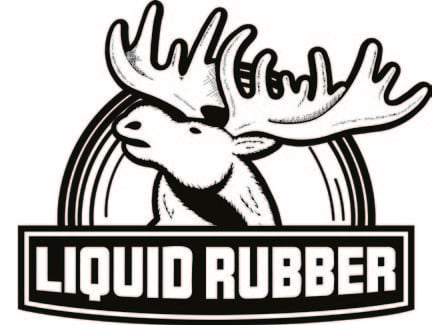Foundation Exterior/Basement Interior FAQUpdated a year ago
Application
Question: Which products do I use to waterproof my foundation/basement wall?
Answer: You can use Liquid Rubber Foundation Sealant for below grade or not exposed to UV applications. You can use Liquid Rubber Color Sealant for your exterior (above and below grade) or interior foundation walls if a color is desired.
Question: How much do I need?
Answer: How much sealant or primer you need depends on the specific product and the project it is being used for. To see which products you need and what the coverage rates are for your project, click here.
Answer: To determine how much sealant or primer you need, divide your total square footage by the coverage rate provided. Example: You have a 300 sq ft foundation wall and the Foundation Sealant coverage rate is 1 gallon per 20 sq ft. so 300/20 = 15 gallons of the Foundation Sealant. (Apply in multiple coats until all material has been used.). Coverage rates are expressed in final coverage and will include all coats needed to achieve membrane thickness.
Question: Do I need Geo-Textile or Seam Tape?
Answer: Yes. Use Liquid Rubber Geo-Textile or Liquid Rubber Seam Tape over cracks, joints, around penetrations, etc. to reinforce against thermal and other movements. These are the area's most likely to leak.
Question: Do I need a primer?
Answer: Primer is always better, but often not used on exterior foundation applications. It is a good idea on interior applications though as this area is subject to moisture vapor drive.
Question: What tools do I need to apply my Liquid Rubber products?
Answer: Liquid Rubber Foundation Sealant is typically applied using a brush or 10mm (3/8") nap roller.
Answer: It can be sprayed with airless, heavy industrial spray units capable of spraying a bitumen coating (e.g. Graco GH833 or better), however, most homeowners will not have access to this equipment.
Answer: Click here to go to our project pages and to download the application guidelines for more information.
Question: Do you have application guidelines/instructions to help me with my installation?
Answer: Yes. Application guidelines can be found on our project pages (click here).
Question: Do you have application videos to help me with my installation?
Answer: Yes. Application videos can be found on our project pages (click here) or on our YouTube channel (click here).
Question: How do I clean my surface?
Answer: Remove any silicone, coal tar, etc. Knock down/grind down sharp points/edges. Pressure wash to remove soils and allow to dry 24-48 hours. Alternatively you can wire wheel the surface before cleaning. Use a mild acid like vinegar or concrete cleaner and a wire brush to remove efflorescence. Refer to our guidelines for more information.
Question: Do I need a new brush/roller every time I apply a new coat?
Answer: If you wrap your brush/roller in plastic (e.g. a grocery bag) you will slow down the curing process and you should be able to use the same brush/roller for your next coat. You can go a step further and place the plastic bag in the refrigerator (Do not allow contact with food)
Question: Can Liquid Rubber products be applied to concrete/Cinder Block/Brick?
Answer: Yes. Liquid Rubber products bond very well to masonry. The surface must be fully cured, free of laitance and efflorescence and have a moisture content of less than 5%. Refer to our application guidelines for more information.
Question: Can Liquid Rubber be applied to PWF (permanent wood foundations)?
Answer: Yes. Liquid Rubber products will bond very well to wood. Be sure wood is sufficiently dry (less than 15% moisture content) and replace rotten sections before coating.
Question: Can Liquid Rubber products be applied to Styrofoam/ICF/spray polyurethane foam (SPF)?
Answer: Yes. Liquid Rubber products are water-based and solvent free, so they won't degrade the foam like other products. Refer to our application guidelines for more information.
Question: Can I coat over an existing coating or paint?
Answer: You can apply over most acrylic/latex, polyurethane, alkyd paint, epoxy paints/coatings with the use of our Liquid Rubber Multi-Purpose Primer and using proper cleaning/preparation techniques. Keep in mind that when you apply over an existing coating or paint, if that coating/paint peels, our coating will peel with it as it is bonded to the existing coating/paint and not directly to the substrate.
Answer: It is recommended to remove oil based or recently applied coatings with high solvent content prior to applying your Liquid Rubber products. (oil and water don't mix and solvents can deteriorate our water-based coatings)
Question: Can I apply one of your cheaper bitumen coatings first then coat over that with a white or colored product?
Answer: No. These are not compatible chemistries and will not provide and adequate bond. The bitumen will also eventually bleed through the colored coating.
Question: Can I paint over it?
Answer: It is better to select one of our colored products if a color is desired. The bitumen will bleed through paints and the paint may delaminate in submerged conditions.
Question: What if I have a problem or question with an application?
Answer: Our technical support team is here to help you, just reach out to call. email or chat with one of our representatives.
Answer: You very well may find the answer you are looking for in one of our application guidelines, which can be found on our project pages here.
Question: Does it come with a warranty?
Answer: Exterior Foundation applications come with a 10 year warranty when properly installed.
Interior Basement applications come with a 3 year warranty when properly installed.
